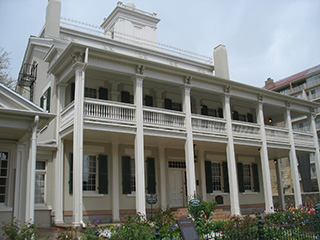

The Beehive House, offices, and the Lion House were constructed by Brigham Young for his families in 1855-56. The building/architect was Truman O. Angell, and the buildings were constructed of adobe brick and local timber. The Church of Jesus Christ of Latter-day Saints purchased the Beehive House in the early 1900s and used if for offices, then a boarding home for young women working in the city. It was restored in the 1960s. As preservation standards have changed significantly since the 1960s, a primary task of the HSR was to identify inappropriate changes during the restoration, identify original elements, and currently missing elements from the home.
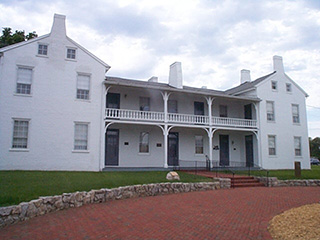
The 1837 tavern built at the then terminus of the National Road was built by David Snively. It later was a grocery store, after work tavern, an office for "electric medicine"(!), and then a rooming house. Purchased in 1938 by the Daughters of the American Revolution, Lagonda Chapter, it was restored as a museum. A fire in 1945 required a new restoration. The Turner Foundation spearheaded the effort to shore up the building structurally, and accurately determine its history to provide the basis for continued interpretation of local history.
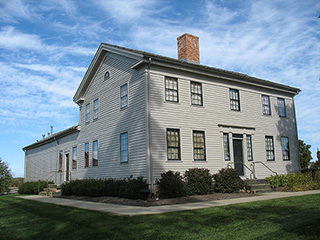
The Johnson family left New Hampshire in 1818, moving to the Connecticut Western Reserve of Ohio where they were successful farmers. In 1831 they met Joseph Smith Jr., and following Elsa's miraculous healing by Smith they joined what was then called the Church of Christ and invited the Smith family to live with them. The Johnson Home became the defacto headquarters of the fledgling Mormon faith for a year.
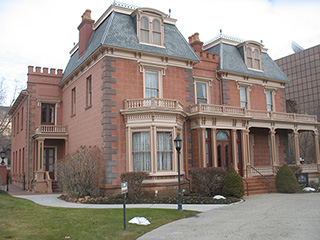
The Devereaux House was originally an adobe residence built by William Staines, a pioneer horticulturalist. William Jennings purchased the property and enlarged it first in 1867 and then again in 1877, creating one of the premier residences in Salt Lake City. Damaged by fire in 1979, in 1984 the home was restored by the State of Utah.The current owner requested an HSR in order to determine what elements of the building were original, and to aid in determining appropriate adaptive uses.
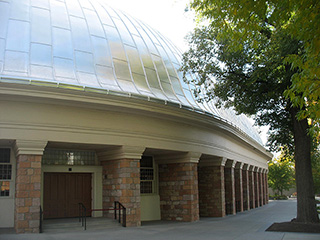
The Salt Lake Tabernacle served as the primary meeting place for the Church of Jesus Christ of Latter-day Saints from 1867 until the Conference Center was constructed in 2000. Reinforcing during a seismic upgrade prompted the client to commission to better understand the unique features of the building and changes over time.
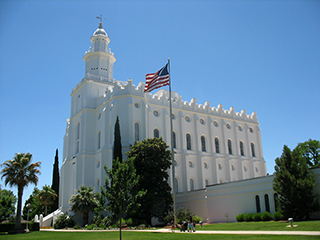
The St. George Temple was the first temple completed in the Great Basin, and is the oldest operating temple of the Church of the Church of Jesus Christ of Latter-day Saints. With no railroad serving the remote location, all materials were either procured on site or brought in by wagon. The HSR identifed original building fabric, provided an assessment of current conditions, and gave recommendations for future work to respect and enhance the surviving elements in the building.

The Salt Lake Temple site was selected when Mormon Pioneers first entered the Salt Lake Valley in 1847, but it was not until 1893 that the building was completed. Thick granite walls required years of quarrying and carving to complete. This HSR was produced with VCBO Architecture as lead, and co-authored with Jacob Olmstead, Joshua Probert, and Charles Shepherd.
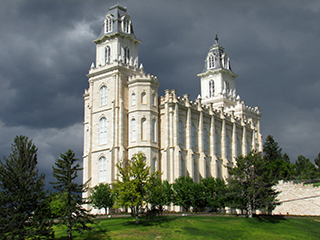
The Manti Temple is the most sophisticated design of the 19th Mormon Temples. The architect, William Folsom, successfully blended the sturdy castelated Gothic form of earlier temples with the then-current Italianate style. The HSR identified original building fabric, provided an assessment of current conditions, and gave recommendations for future work to respect and enhance the surviving elements in the building.
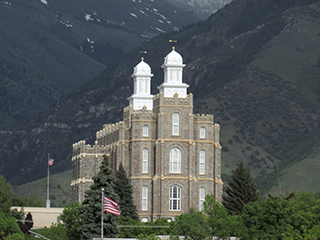
The Logan Temple has a complex building history, as an electrical fire in 1917 required signficant rebuilding of interiors and an unsympathetic renovation in 1978 removed many historic elements from the temple. The HSR outlined this history, and provided strategies to enhance the historic elements in the building despite the loss of so much original building fabric.